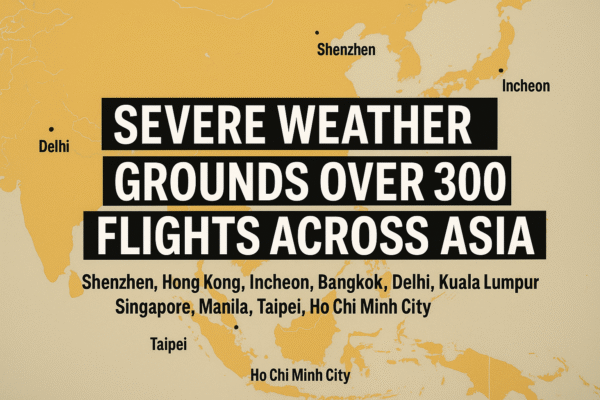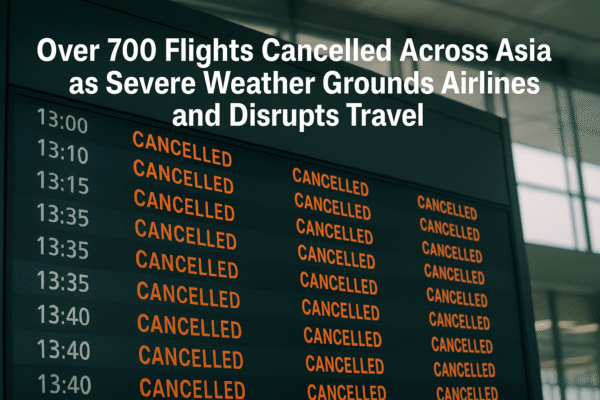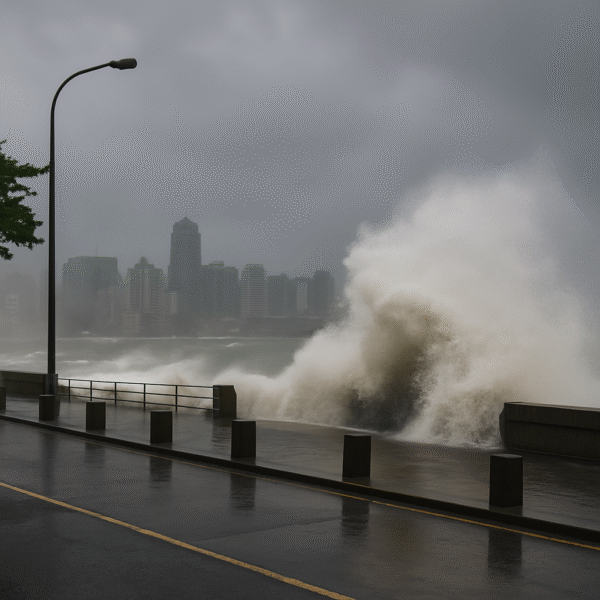Facing a sharp downturn in international arrivals and increasing pressure from regional rivals and U.S. trade policies, Thailand is fast-tracking a national tourism recovery strategy. Authorities and industry leaders are introducing aggressive measures such as instant VAT refunds, retail reforms, and shopping campaigns to reignite visitor spending and reclaim the kingdom’s position as a top travel destination in Southeast Asia.
According to the Ministry of Tourism and Sports, Thailand welcomed 17.75 million international tourists between January and July 13, 2025, marking a 5.62% year-on-year drop. This downturn, coupled with rising geopolitical and economic headwinds, is threatening the nation’s ambitious target of 35.5 million international arrivals and 2.87 trillion Baht in tourism revenue for the full year.
Compounding Challenges: Regional Competition and Tariff Pressures
Thailand’s decline in arrivals comes as nearby destinations including Vietnam, Japan, and China ramp up their tourism incentives. China has launched a 13% VAT rebate for foreign tourists, directly competing with Thailand for high-value visitors. Meanwhile, Vietnam continues expanding its e-visa scheme and tax-free shopping in Ho Chi Minh City and Hanoi.
Adding to the strain, new U.S. import tariffs of up to 36%, effective August 1, 2025, threaten to raise the cost of Thai goods and weaken Thailand’s appeal to international shoppers. These external pressures are prompting urgent policy innovations to maintain competitiveness.
VAT Refund Reform and “Thailand Shopping Paradise”
In response, the Thai Retailers Association (TRA) has partnered with the Tourism Authority of Thailand (TAT) to launch a major retail tourism initiative dubbed “Thailand Shopping Paradise.” Central to the campaign is a pilot program enabling instant 7% VAT refunds at select shopping zones and malls for foreign tourists spending over 3,000 Baht.
TRA President Somchai Wanchaithanawong said the scheme is designed to stimulate spending in major tourism hubs such as Bangkok, Phuket, Chiang Mai, and Pattaya, especially among tourists from Asia and the Middle East. “This is about immediate incentives. If tourists see they get money back on the spot, they’ll spend more,” he explained.
The TRA is targeting 7% growth in tourism-related spending by 2026, hinging on the government’s swift adoption of retail and customs reforms.
Proposed Duty-Free Zones and Tariff Cuts
TRA has also proposed the creation of duty-free zones in high-traffic areas and tourist airports. This would not only boost sales but deter purchases from unregulated grey markets. High-import tariffs—currently 20–30% on cosmetics, designer apparel, and electronics—are also being reviewed to enhance retail competitiveness.
Thailand’s Ministry of Finance is reportedly considering temporary tariff reductions to support the tourism-linked retail economy, particularly in light of reduced foot traffic and rising global costs.
Domestic Integration: A Nationwide Retail Festival
Inspired by Singapore’s successful “Great Singapore Sale,” Thailand aims to roll out a synchronized nationwide shopping festival involving retailers, hospitality operators, and transportation providers. Malls in Bangkok, Chiang Mai, and regional centers would coordinate promotions with hotels, restaurants, and ride-hailing services, creating a festive, value-driven tourism experience.
This integration aligns with TAT’s broader goal of increasing domestic trips to 205 million, generating over 1.1 trillion Baht in local tourism revenue in 2025.
Recovery in the Chinese Market
Once the largest source of tourists to Thailand, the Chinese market is recovering slowly. While daily arrivals have risen above 10,000, they remain well below the pre-pandemic average of 30,000. The Bank of Thailand (BOT) acknowledges ongoing safety concerns and economic caution among Chinese travelers.
Efforts to restore Chinese visitor confidence include targeted WeChat marketing campaigns, Mandarin-speaking hotel staff recruitment, and joint airline promotions. A bilateral tourism cooperation agreement signed in June 2025 between the Thailand-China Tourism Partnership Board and China’s Ministry of Culture and Tourism aims to enhance mobility and mutual promotion.
Reevaluating Visa-Free Stay Policies
Thailand’s 60-day visa-free entry policy for 93 countries has recently come under scrutiny. Industry experts argue that tailoring visa durations based on average stay length and origin market behavior would improve resource allocation and better manage immigration flows. A TAT-Immigration Bureau working group is currently evaluating tiered visa models that align with national security and economic goals.
Economic Impacts of U.S. Tariffs on Tourism
The new U.S. tariffs not only threaten Thailand’s export sector but could also dampen the tourism-linked retail sector, especially for American travelers. Higher import duties may force retailers to raise prices, weakening Thailand’s value proposition for long-haul shoppers.
Negotiations between the Thai Ministry of Commerce and U.S. trade officials are underway. The outcome may influence Thailand’s ability to retain U.S. visitor spending, which averaged $1,600 per tourist in 2024, according to the World Bank’s international tourism receipts report.
Strengthening Local Business Integrity
To enhance sustainability, Thailand is enforcing regulations against illegal nominee operations in hotels and restaurants. These businesses, often owned by foreigners under Thai aliases, distort competition and reduce SME growth. The Department of Business Development has initiated crackdowns, especially in tourist-heavy provinces like Phuket and Krabi.
Additionally, authorities are tightening controls on low-quality imports, particularly in sectors like food and electronics, to protect Thai entrepreneurs and ensure product safety for consumers.
Turning Adversity Into Opportunity
Thailand’s tourism downturn may serve as a catalyst for structural reform. By integrating retail modernization, tax innovation, security policy adjustments, and strategic trade diplomacy, the kingdom is positioning itself not just for recovery but for future resilience.
With the right execution, these multifaceted reforms could reestablish Thailand as a leading travel and shopping destination in Asia, while ensuring economic stability and broader market appeal amid global uncertainty.
For more travel news like this, keep reading Global Travel Wire






















